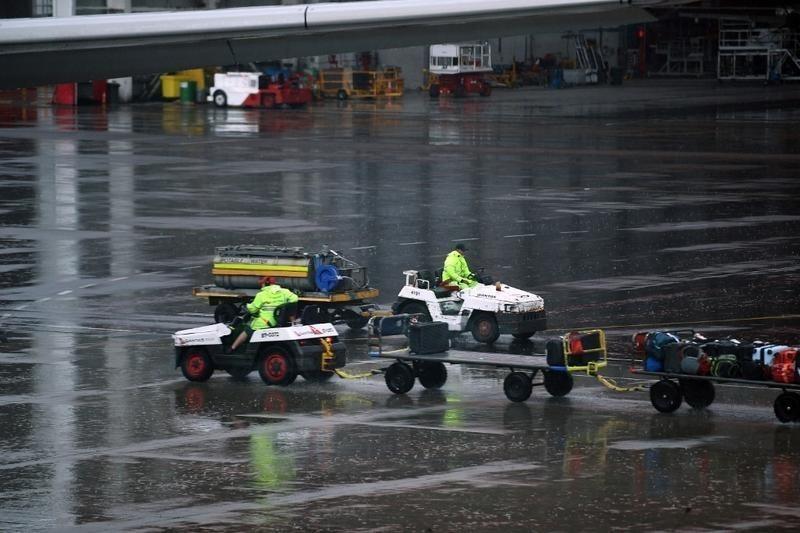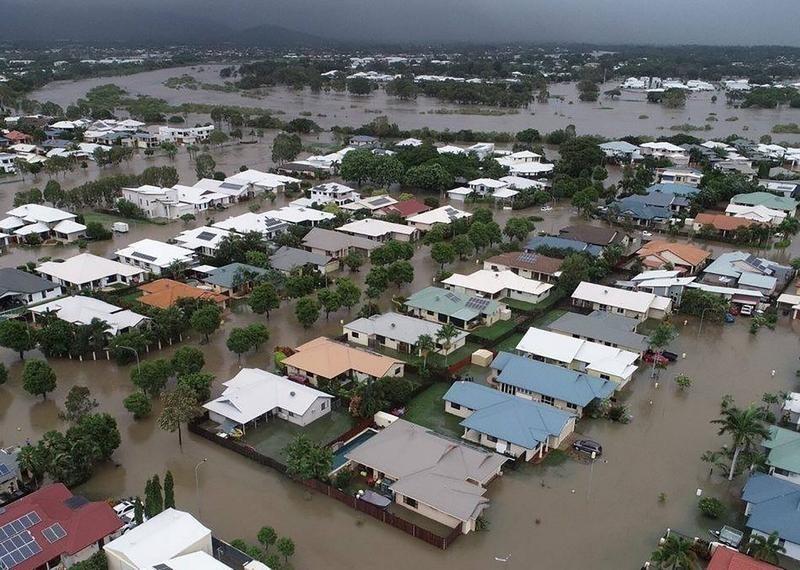 In this file photo taken on Jan 17, 2020, ground staff work under the rain at Sydney domestic airport. (SAEED KHAN / AFP)
In this file photo taken on Jan 17, 2020, ground staff work under the rain at Sydney domestic airport. (SAEED KHAN / AFP)
MELBOURNE/SYDNEY — A four-day downpour across Australia’s east coast has brought relief after months of devastating bushfires and years of drought, but also widespread storm damage and forecasts of more wild weather to come.
The weekend drenching represented the biggest sustained run of rainfall in Sydney and surrounding areas for 30 years
The weekend drenching represented the biggest sustained run of rainfall in Sydney and surrounding areas for 30 years, dousing some bushfires and replenishing depleted dams across New South Wales, the country’s most popular state.
Some rural areas received more rain in recent days than they had in the entirety of the past year - a startling and swift turnaround from the bushfires that have killed 33 people and ravaged large parts of the east coast.
“It’s amazing what the smell of the rain can do to people’s spirits,” Ben Shields, the mayor of the inland city of Dubbo, told Reuters on the phone.
Like many other rural towns, Dubbo has been beset by duststorms and subjected to water restrictions on the back of a three-year drought.
 A photo taken and recieved Feb 4, 2019, from the Queensland Fire and Emergency Services (QFES) shows the flooding in Townsville. (PHOTO / AFP)
A photo taken and recieved Feb 4, 2019, from the Queensland Fire and Emergency Services (QFES) shows the flooding in Townsville. (PHOTO / AFP)
James Jackson, a sheep and cattle farmer in the drought-hit Guyra district some 500 kilometers north of Sydney, told Reuters the region was starting to turn green again.
“This one event won’t replenish the whole soil moisture profile, we’ll need a couple of these, but this is certainly a good start for those people who got it,” said Jackson, who is also the president of industry body NSW Farmers.
“I have two-year-old sheep who are seeing green grass for the first time.”
Bushfire warning signs were almost swamped by floods in several areas as the weekend rainfall cut power to tens of thousands of homes, caused travel chaos in Sydney and closed scores of schools for the start of the week.
Almost 400 millimeters of rain fell in the Sydney area and surrounding areas. The Warragamba Dam, which supplies about four-fifths of Sydney’s water, jumped from about 40 percent to above 60 percent full in just over a week, the state’s water authority said, shoring up water supplies for the city of 5 million.
The NSW Rural Fire Service’s Sydney headquarters has been reconfigured to respond to floods and storm damage amid the rapid shift in the weather threat.
The NSW State Emergency Service, which responds to flood and storm damage, received more than 2,700 calls for help overnight, with the number of calls since last Wednesday topping 10,000, SES spokesman Andrew Richards said.
MORE RAIN STILL NEEDED
Parts of northern and inland NSW, along with southern Queensland, have been in drought since 2016, severely reducing river and dam levels while also creating the tinder-dry conditions that have fueled this season’s deadly bushfires.
ALSO READ: Australia mega-fire doused as torrential rain brings relief
The weekend rain has put out one of the state’s worst bushfires, Currawon on the south coast, which burned for 74 days, destroying 312 homes and razing nearly 500,000 hectares (1.2 million acres) of land, according to the NSW Rural Fire Service (RFS).
There were 33 fires burning as of Monday morning in the state but they were all at the lowest warning level of “advice” and mostly in southeastern areas where the rains were headed.
Flood evacuation warnings have been ordered for parts of the Conjola region, authorities said, where deadly fires razed dozens of homes on New Year’s Eve. Thunderstorms are forecast for NSW and neighboring Victoria state in coming days.
Still, BOM forecaster Jane Golding said more rain was needed to end the country’s three-year drought.
“I know that some farmers ... are feeling pretty optimistic. But what we really need is follow-up rain,” she told reporters.
READ MORE: Australia firefighters focus on floods after rain lessens blazes
“The rainfall deficiency is so severe that the soil is dry to deep levels, so we really need that follow-up rain.”


